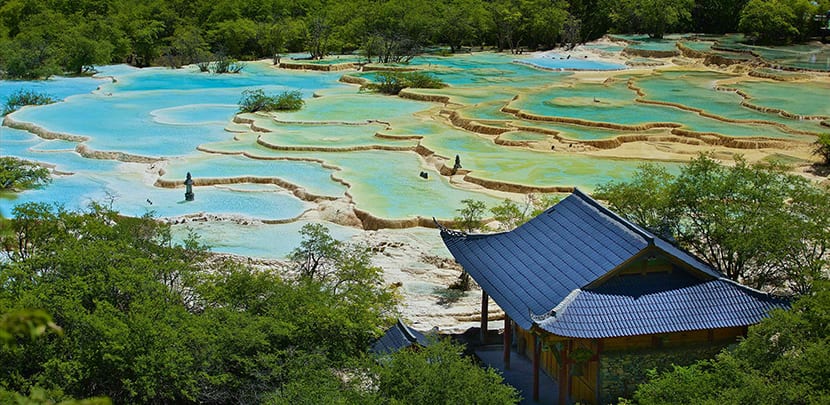
China has many sites that UNESCO has declared World Heritage and one of them is the one you see in the photograph: a colorful and wonderful area called huang long. If you want to know China and go beyond Beijing, Shanghay and Hong Kong then your steps should take you to Sichuan.
It is not a comfortable destination or close, but between the trip and the landscapes that will receive you when you arrive, it will undoubtedly be a great adventure in your life. It has been a World Heritage Site since 1992 and you have to see it in person to find out why.
Huanglong Historic and Scenic Interest Area
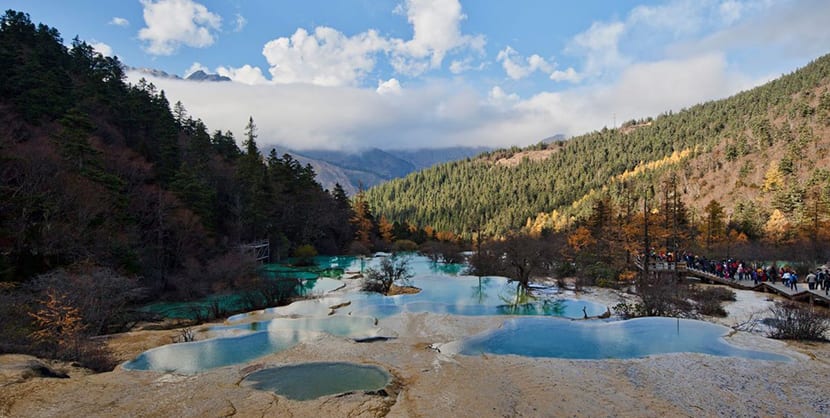
As I said above is in sichuan, within the Minshan mountain range, about 300 kilometers from Sichuan capital Chengdu, and 144 kilometers south of Jiuzhaigou. In turn, it is part of the Huanglong Scenic Reserve and the national park of the same name.
The photos show you a site that looks like something out of a fairy tale. The star is a ravine, the call Yellow Dragon Gorge, which travels just over three and a half kilometers and that from a distance resembles a sinuous golden dragon. And it is that there are deposits of carbonated calcium, several layers, all through the forests and glaciers of the valley. Have formed ponds at different heights and there are waterfalls that link them.
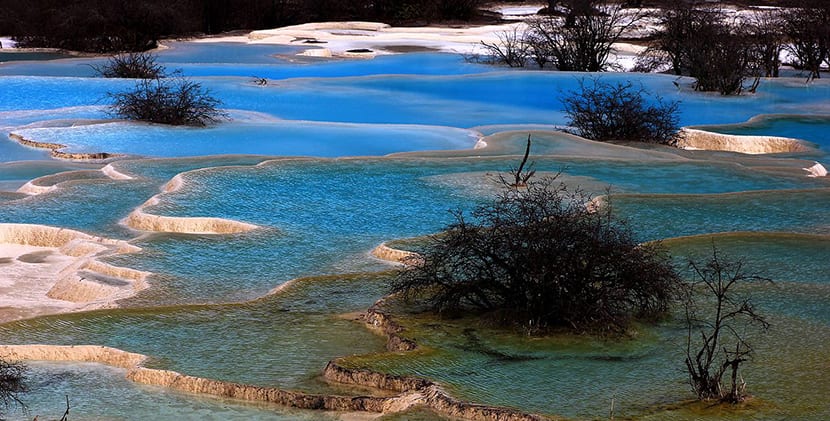
The main tour of golden ponds and waterfalls begins at an ancient Buddhist temple that is high up in the valley and ends at a beautiful pond called Visitor's Pond. The colors of the place vary according to the time of year but also the shapes because the ponds are larger or smaller or even of different shades between yellow, brown, blue and green depending on whether it is hot or cold.
The geology of the place has been formed over the centuries. Mineral deposits have seeped into the ground and created these natural hot spring pools of different depths. The water slides from one to the other and has even excavated caves throughout the valley. There are also peaks on both sides of the creek and the same river that flows between the ponds and along its course keeps reminding visitors why the site is called Quebrada del Dragon Amarillo.
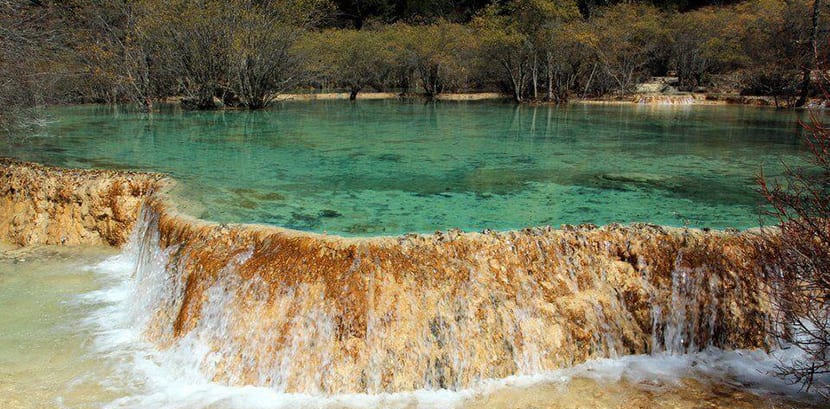
On the other hand, this part of China is home to many species, among them the Giant Panda and the Golden Monkey. It is not that you are going to see these animals for sure but they live here and that adds value to the landscapes. It is not only about ponds, the place has many beautiful sites: there is one 14 meter high waterfall, caves, dunes, temples and many colorful ponds with fancy names. All embraced by eternally white peaks that are between 1700 meters and 5588 meters in altitude, glaciers included. The whole area has about 60 thousand hectares.
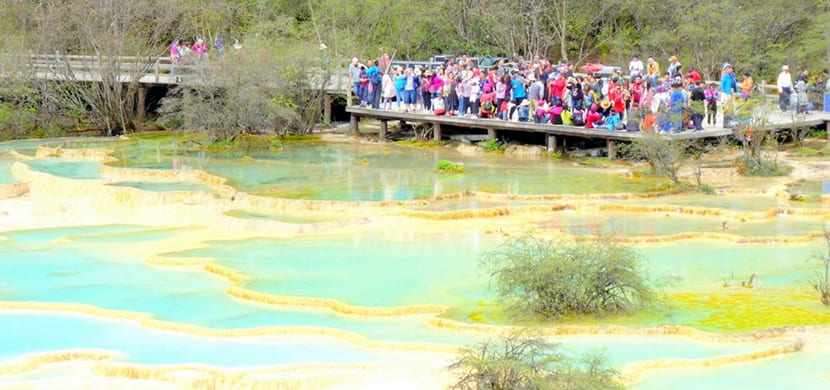
Today the government has built a 4.2-kilometer wooden walkway that runs along the groundor travertine and that allows visitors to appreciate it in a four-hour walk. Also, in high season there is a cableway.
How do you get to this corner of China? Well you take a train or bus in Beijing to take you to Chengdu. From Jiuzhaigou Station in this city you take a bus to Huanglong National Park. The first departure time of the bus is at 7 am, it takes three and a half hours, and leaves back to the city at 3, 3:30 pm. It is imperative to check the schedules.
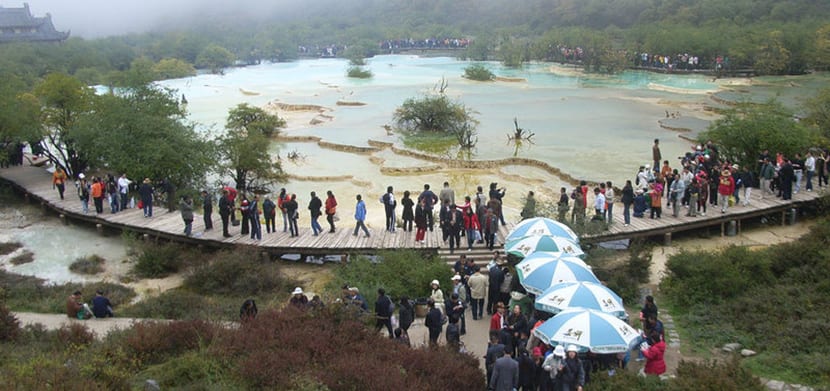
There are also buses that link Chengdu with Huanglong Airport and if not you can take a taxi. Calculate the trip in four hours from Jiuzhaigou. You can always sign up for a tourThe most popular is the seven-day tour that runs through Jiuzhaigou and Chengdu, which usually includes a hiking tour to Songpan, which is about 56 miles away.
Entrance to the park costs about $ 30 per adult in high season and much less, 10 dollars, in low season. Peak season lasts between April 1 and November 15 and the park is open from 8 am to 5 pm. The best months to visit, the warmest at least, are June July and exhaustion, however the ocher and golden colors of autumn are beautiful because they are reflected in those hundreds of ponds in a unique way.
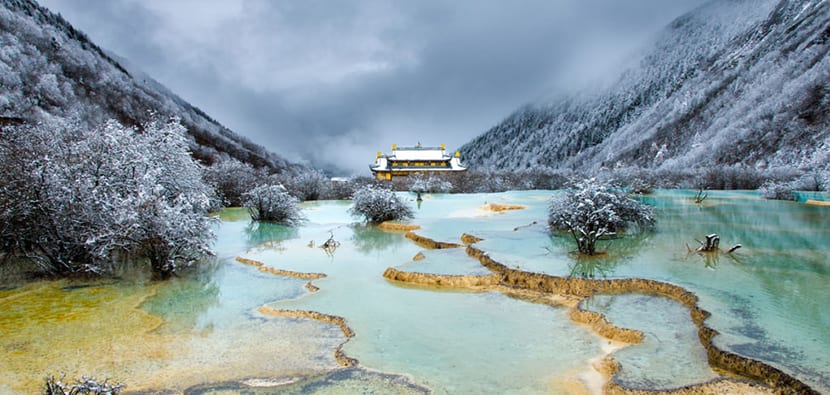
Obviously, winter also has its charms as there is snow everywhere except in the hot water ponds so you can imagine that play of colors. Except that the place is frozen, it is to take the best photos. As you might suppose, the warmest months are July and August during which the temperature is around 16ºC. If you go from December to February the temperature is 1ºC or less. The rainy season is from May to August and here the mornings and afternoons are foggy. Remember that it is a valley and that temperatures always vary.
When you plan the visit, try to organize everything to start very early because the park will surely take you all day. The walkway that I mentioned earlier runs 4 kilometers uphill and then you can take a cableway to do the reverse. It is advisable to bring food, comfortable shoes, water and something that repels the rain. There is an area of shops and bathrooms, luckily, but you should bring your own to avoid paying more and yes, toilet paper.